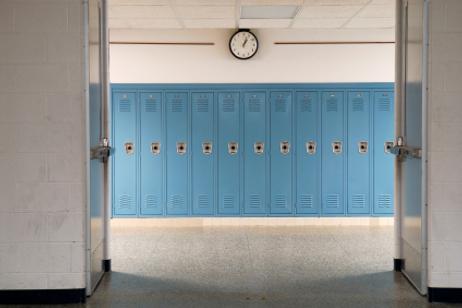Sixth grade has been described as a major crossroads of a child's development. Thus, it would seem important to place sixth graders in the proper environment during this critical period. Curiously, a decades-long debate continues regarding whether sixth graders are better off in elementary school or middle school. After looking at common characteristics of sixth graders, this article examines the pros and cons of each approach. Although a 2007 study concluded that sixth graders in elementary school behave and test better than sixth-graders in middle school, 75 percent of school districts in the U.S. place sixth graders in middle school. Moreover, school district decisions to place sixth grade in elementary or middle school are sometimes based on purely financial considerations. The article concludes with some tips for parents who are concerned about sending their sixth-graders to middle school.
What Are Sixth Graders Like?
Educators agree that sixth graders are an unusually diverse group to which few generalizations apply. They are all moving from childhood to adolescence, but each one seems to move at a different pace. Here are some milestones that parents can expect as their children approach and enter sixth grade:
- Children mature physically around the time of sixth grade. Girls become concerned about their physical appearance as their bodies begin to change. Boys may gain a lot of height and may start to shave. These physical changes often occur before children develop the emotional maturity to deal with them.
- Girls mature physically sooner than boys.
- Children begin to notice boys and girls of the opposite sex and feel attracted to them in ways they may not understand.
- A child's peer group becomes more important than his or her family. Peer pressure becomes a powerful force. Some distance may grow between the child and the parents.
- Children experience emotional changes that may leave them confused, angry, or rebellious.
- Children may show maturity in some ways and remain completely childish in other ways.
- Compared to prior generations, sixth-graders today are exposed to more adult experiences at earlier ages.
- Some sixth graders are sexually active or have experimented with drugs or alcohol.
The Debate
Given all the physical and emotional changes that are going on in the lives of sixth graders, would they be better off as the highest grade in elementary school or as the lowest grade in middle school? Elementary school and middle schools differ in many aspects. In elementary schools, sixth-graders spend most of the day with the same teacher and classmates in the same classroom. There is less freedom because the students are carefully monitored. In contrast, middle school children have several teachers for different subjects and move from classroom to classroom throughout the day. Middle schools allow more freedom because the faculty and staff have less opportunity to monitor the students. Middle schools stress academic achievement more than elementary schools.
This brief video discusses the elementary to middle school transition.
Sixth graders were moved between elementary schools and middle schools throughout the 20th century. At first, sixth-graders attended elementary school with grades one through eight. Then schools began to cut off elementary school in grade six. Seventh through ninth graders were placed in a junior high or middle school, which was supposed to bridge the gap between elementary and high schools. In 1970, only 25 percent of sixth-graders were placed in middle schools. During the 1970s through 2000, however, millions of sixth-graders were transferred to middle schools, and ninth-graders were moved to high schools. Seventy-five percent of sixth-graders nationwide now go to middle school. The tide may be turning again, however, in favor of returning sixth-graders to elementary school.
Factors Favoring Sixth Grade in Elementary School
? Sixth graders in middle school have more behavioral problems than their peers in elementary school. In a highly-regarded 2007 study of public school students in North Carolina, a group at Duke University's Terry Sanford Institute of Public Policy looked at behavior to evaluate whether sixth-graders were better off in elementary school or middle school. After appropriate adjustments for socioeconomic and demographic factors, the study showed that sixth graders attending elementary school were less likely to have discipline problems than their middle school counterparts. Moreover, the discrepancy in discipline problems continued through the eighth and ninth grades. Studies have shown that disciplinary problems correspond with low academic achievement.
? Sixth graders in elementary school test higher than those in middle school. The Duke study also considered test scores. The researchers found that sixth-graders in elementary school scored higher than their peers in middle school on standardized end-of-grade tests. A recent study in Philadelphia the school system concurred with the Duke study. According to school superintendent Paul Vallas, the study showed that sixth graders in elementary schools perform better on standardized tests than those in middle schools. In response, Philadelphia is reducing the number of middle schools from 46 to eight and placing the sixth graders in elementary schools.
? Sixth graders in middle school are exposed to older teens which may have a negative influence on them. Children in the sixth grade are at a point in their lives when they are easily influenced by their peers. Keeping the sixth graders in elementary school gives them another year to mature before they are exposed to older adolescents
? Middle schools are usually larger than elementary schools. Rightly or wrongly, middle schools have a reputation of seeming large, uninviting, and impersonal. Middle schools have been referred to as the lost stepchildren of the education system. Many parents and teachers believe that sixth graders do better in a smaller, more nurturing setting where there are fewer classmates and more one-on-one contact with the teacher.
? Middle schools tend to be located tend further away from home than elementary schools. Probably because there are fewer middle schools than elementary schools, many parents find that the middle school is further away from home than the elementary school. They do not like the idea of their sixth-graders being so far away. They also question whether a longer commute is appropriate for sixth graders.
Factors in Favor of Sixth Grade in Middle School
? Sixth graders in middle school have greater access to extracurricular activities. In one Michigan school district, the sixth grade will be moved to middle school beginning the 2008-2009 school year. The officials noted that at middle school the sixth graders would have access to more extracurricular activities, such as art, band, music, and athletics. It was also noted, however, that the restructuring would allow the middle school to serve 50 more students in the same building with three fewer teachers.
? Placing sixth grade in middle school allows sixth graders more independence. Another school district recently announced that sixth grade would move to middle school in order to give sixth-graders more independence. The district had tried to make the change a year before, but opposition from parents caused a delay.
? Middle schools may offer innovative programs in which sixth graders may be eager to participate. Parents of students in one school district in Ohio were excited about enrolling their sixth-graders in an expanded middle school because of the school's innovative programs. The school admitted only 25 students in the sixth, seventh, and eighth grades. Students, who are allowed to study at their own pace, are grouped by age levels rather than grade levels. The classes are divided into smaller advisory groups in which one adult mentor remains with the students for three years.
This video reports on a sixth-grade being added to an elementary school.
What Do Kids Think?
Right before fifth graders in a Michigan elementary school were going to start sixth grade in middle school, the board of education decided to move the sixth grade from middle school to the elementary school. So, children who had anticipated going to middle school had to adjust to the fact that they were remaining in their elementary school. The change was made as part of a restructuring plan to reduce costs. Later, the children were interviewed about their experience. Many children admitted that they were disappointed in the first learning of the change. After completing sixth grade, however, most of them were glad that they had one more year in elementary school.
Financial Considerations May Prevail
Sometimes a move of six graders from an elementary school to a middle school, or vice versa, is simply a matter of financial necessity. Public school systems all over the country are experiencing cutbacks because of decreased federal and state funding. For example, if the elementary schools are too crowded and the facilities cannot be expanded, a school district may be forced to relocate the sixth graders, especially if there is extra room in the middle schools. There is anecdotal evidence that many school districts that are moving sixth graders this time are doing so not based on any of the factors considered above but rather because of budgetary constraints or declining enrollment. The following are a few examples.
? A Florida school district moved its fifth grade to middle school in response to declining enrollment.
? A school district in Massachusetts was forced to consider moving the fifth grade from elementary to middle school. Numerous school districts in the state already had fifth-graders attending middle school. The reaction by parents, teachers, and school board members was mixed. One school official commented that the move would free up space to offer more programs at the elementary schools.
? Because of budgetary shortfalls, one school district in Maryland closed its only middle school, transferring sixth and seventh grades to elementary schools and ninth grade to a high school. The restructuring saved the district $4 to $5 million.
? Sixth grade was added to two Kansas elementary schools to compensate for their declining enrollment.
This video explores some of the expectations versus the reality of attending middle school.
Tips for Concerned Parents
If your child is attending sixth grade in middle school and you would prefer that the child be in elementary school, here are some suggestions for making the best of it:
? Continue to be as involved in your child's education as you were during the elementary school years.
? Talk with your fifth grader about the differences between elementary and middle schools. Discuss the changes that he or she will experience in middle school.
? Once your child gets his or her schedule, go to the middle school and walk with your child from classroom to classroom according to the schedule. Locate the cafeteria, the restrooms, and the lockers.
? Support a transition program in which fifth-graders spend time at the middle school before leaving fifth grade.
? Confirm that the sixth graders are physically separated from the older students in a separate section of the school.
Above all, parents should be informed activists and advocates for their children. If your school district announces that the sixth graders are being moved to middle school and you do not think the move would be in your child's best interests, attend hearings and school board meetings and urge other parents to do so. Be vocal in your opposition. Find out why the school district is proposing the change and suggest alternative solutions. It is not unheard of for school districts to abandon plans in the face of strong parental opposition.
Conclusion
The sixth grade is a critical time in a child's education because it is a time of physical and emotional transition from childhood to adolescence. The real answer to where a sixth-grader belongs depends on the particular sixth grader. There are some children who would be better off in middle school because they are mature enough to deal with the extra challenges. Other sixth graders are unprepared for such a drastic change and need the security of an elementary school. When decisions have to be made for whole classes of sixth graders, however, the factors in favor of keeping sixth graders in elementary school seem to outweigh the reasons for placing them in middle school.
Questions? Contact us on Facebook. @publicschoolreview















